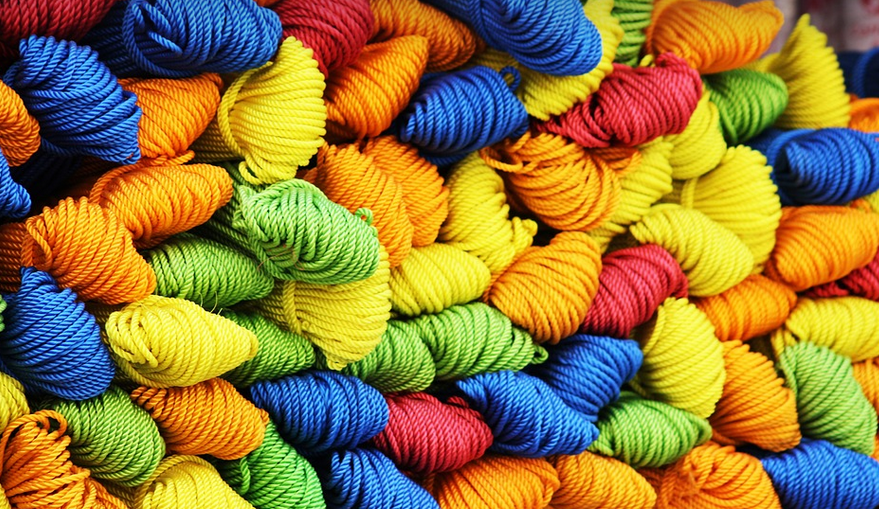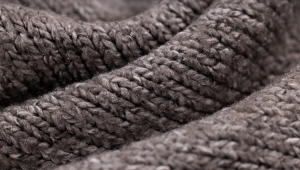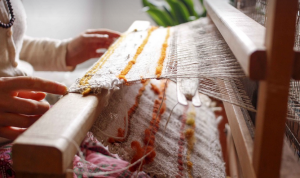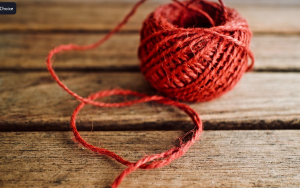
Unlocking Nature’s Palette: The Magic of Eco-Printing
Imagine working with nature itself, using sunlight, plants, and your own creativity to transform a simple piece of cotton fabric. This is the essence of eco-printing—a captivating process that marries art with sustainability. It allows you to express your artistic vision while minimizing environmental impact.
Eco-printing on cotton is a technique rooted in tradition, drawing inspiration from indigenous cultures worldwide. For centuries, artisans have used natural dyes extracted from fruits, leaves, and flowers to create stunning prints on fabric. This ancient art form has been passed down through generations, embodying a deep connection to the earth.
In the modern era, eco-printing continues to gain popularity. The allure of creating unique, one-of-a-kind textiles with natural elements is irresistible. Beyond the aesthetic appeal, this method holds profound environmental significance. It minimizes reliance on harsh chemicals and promotes a more sustainable approach to fashion.
The beauty of eco-printing lies in its versatility. It allows you to experiment with various plant materials and achieve diverse results. The vibrant hues of petals and leaves can be used to create delicate floral prints, or bold patterns inspired by nature’s textures.
To embark on this artistic journey, you’ll need a selection of natural dyes, like those derived from spices like turmeric or ginger, berries, marigold flowers, or even tea. These are readily available online or at specialized craft stores, offering a wealth of choices for your creative endeavors.
Crafting Your Eco-Printing Adventure
The process of eco-printing on cotton involves several steps that can be broken down into manageable chunks:
1. **Preparation:** Start with pre-washed and dried cotton fabric to ensure optimal results. Then, carefully prepare your chosen natural dyes by steeping them in water according to the instructions provided.
2. **Printing:** This is where you unleash your creativity! You can apply different techniques like rolling, pressing, or dipping the fabric onto plant-infused dye solutions, allowing the colors to infuse the cotton fibers. Experiment with various methods to discover what works best for you, and have fun!
3. **Drying:** Once the printing process is complete, carefully dry the fabric according to the chosen method. This step is crucial for preserving the vibrancy of your eco-printed artwork.
4. **Finishing:** Consider adding embellishments like hand-stitching or embroidery to enhance the texture and visual appeal of your creation.
Remember, eco-printing isn’t just about creating beautiful prints; it’s about appreciating the connection between art, nature, and sustainability.
Sustainability: A Key Feature
The heart of eco-printing lies in its commitment to environmental responsibility. This practice minimizes the use of harmful chemicals, reducing your ecological footprint. When you choose an eco-friendly approach for crafting textiles, you’re actively contributing to a greener future.
In today’s world, conscious choices are more important than ever. By embracing eco-printing techniques, you can create beautiful and sustainable clothing. It’s a reminder that fashion doesn’t need to be at odds with the environment.
Furthermore, eco-printed fabrics become treasures to wear for years. The natural dyes used in this process fade gracefully over time, creating a unique and personalized aesthetic.
Embracing the Journey of Eco-Printing
Beyond its artistic appeal, eco-printing on cotton offers a profound sense of connection with nature. By engaging with this ancient craft, you’re not just creating artwork but also fostering your awareness of the environment.
Consider starting a journal to document your artistic journey through eco-printing. It can be an exciting way to track your progress and reflect on the creative process. The act of documenting your eco-printed creations can help you appreciate how far you’ve come and inspire future endeavors.
Experiment, play around with different natural materials, techniques, and color palettes—the possibilities are endless. Each print tells a story. You, through this artistic expression, will have created something unique that resonates with your soul and the spirit of sustainability.


